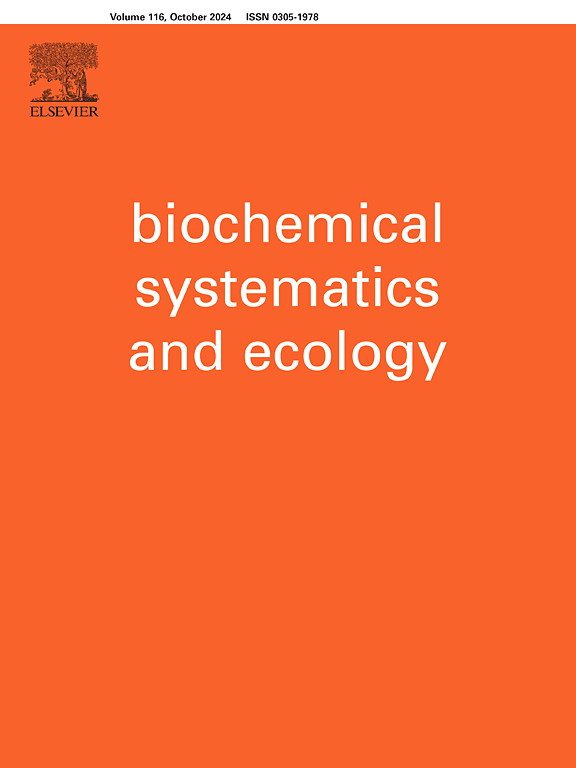Phytochemical and chemometric investigation of morphotypes of Calophyllum brasiliense Cambess. (Calophyllaceae) in the mountainous region of Espírito Santo, Brazil
IF 1.4
4区 生物学
Q4 BIOCHEMISTRY & MOLECULAR BIOLOGY
引用次数: 0
Abstract
Calophyllum brasiliense Cambess. is a highly diverse species in the tropical forests of the American continent, recognized by the traditional community for its phytotherapeutic potential. This diversification is associated with its high ecological plasticity, giving it the ability to synthesize various secondary metabolites such as phenolic compounds, coumarins, chromones, xanthones, terpenes, and flavonoids, all with multiple biological properties. Based on morphological, genetic, and chemical evidences indicating the existence of chemotypes within the species, chemometric and spectroscopic techniques were employed to investigate the similarity or dissimilarity of different morphotypes in a population of C. brasiliense located in the mountainous region of the state of Espírito Santo, Brazil. The ethyl acetate: dichloromethane solution (1:1, v/v) used for secondaries metabolites extraction from.
C. brasiliense leaves proved effective in obtaining extracts rich in polyphenols. The results of multivariate analyses and infrared spectroscopy indicated similar metabolic profiles among morphotypes, highlighting the presence of polyphenolic compounds, with emphasis on the Jacareuba and Diamond morphotypes. Electrospray ionization ESI (−/+) FT-ICR analysis enabled the identification of 20 chemical substances, with notable mention of the chromone 12-acetyl apetalic acid, mammea-type coumarins (B/BB and A/BB), and the pyranocoumarin inophyllum C. Regarding the quantification of gallic acid, both morphotypes showed low levels. Based on the results, we suggest the possibility of different chemotypes within the population, emphasizing the need for further chemometric analyses, molecular studies, and biological activity assessments for a more accurate understanding.
求助全文
约1分钟内获得全文
求助全文
来源期刊

Biochemical Systematics and Ecology
生物-进化生物学
CiteScore
3.00
自引率
12.50%
发文量
147
审稿时长
43 days
期刊介绍:
Biochemical Systematics and Ecology is devoted to the publication of original papers and reviews, both submitted and invited, in two subject areas: I) the application of biochemistry to problems relating to systematic biology of organisms (biochemical systematics); II) the role of biochemistry in interactions between organisms or between an organism and its environment (biochemical ecology).
In the Biochemical Systematics subject area, comparative studies of the distribution of (secondary) metabolites within a wider taxon (e.g. genus or family) are welcome. Comparative studies, encompassing multiple accessions of each of the taxa within their distribution are particularly encouraged. Welcome are also studies combining classical chemosystematic studies (such as comparative HPLC-MS or GC-MS investigations) with (macro-) molecular phylogenetic studies. Studies that involve the comparative use of compounds to help differentiate among species such as adulterants or substitutes that illustrate the applied use of chemosystematics are welcome. In contrast, studies solely employing macromolecular phylogenetic techniques (gene sequences, RAPD studies etc.) will be considered out of scope. Discouraged are manuscripts that report known or new compounds from a single source taxon without addressing a systematic hypothesis. Also considered out of scope are studies using outdated and hard to reproduce macromolecular techniques such as RAPDs in combination with standard chemosystematic techniques such as GC-FID and GC-MS.
 求助内容:
求助内容: 应助结果提醒方式:
应助结果提醒方式:


